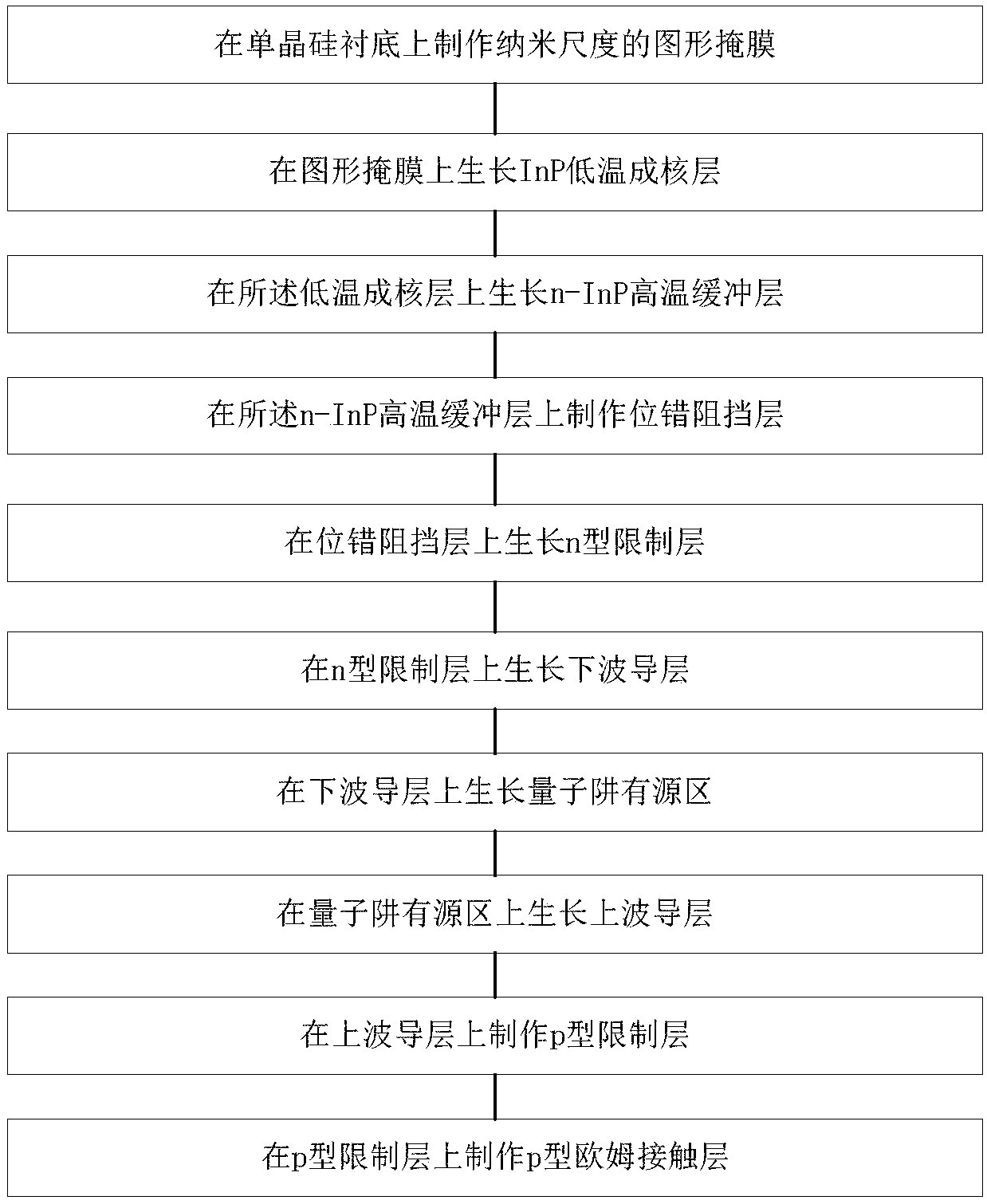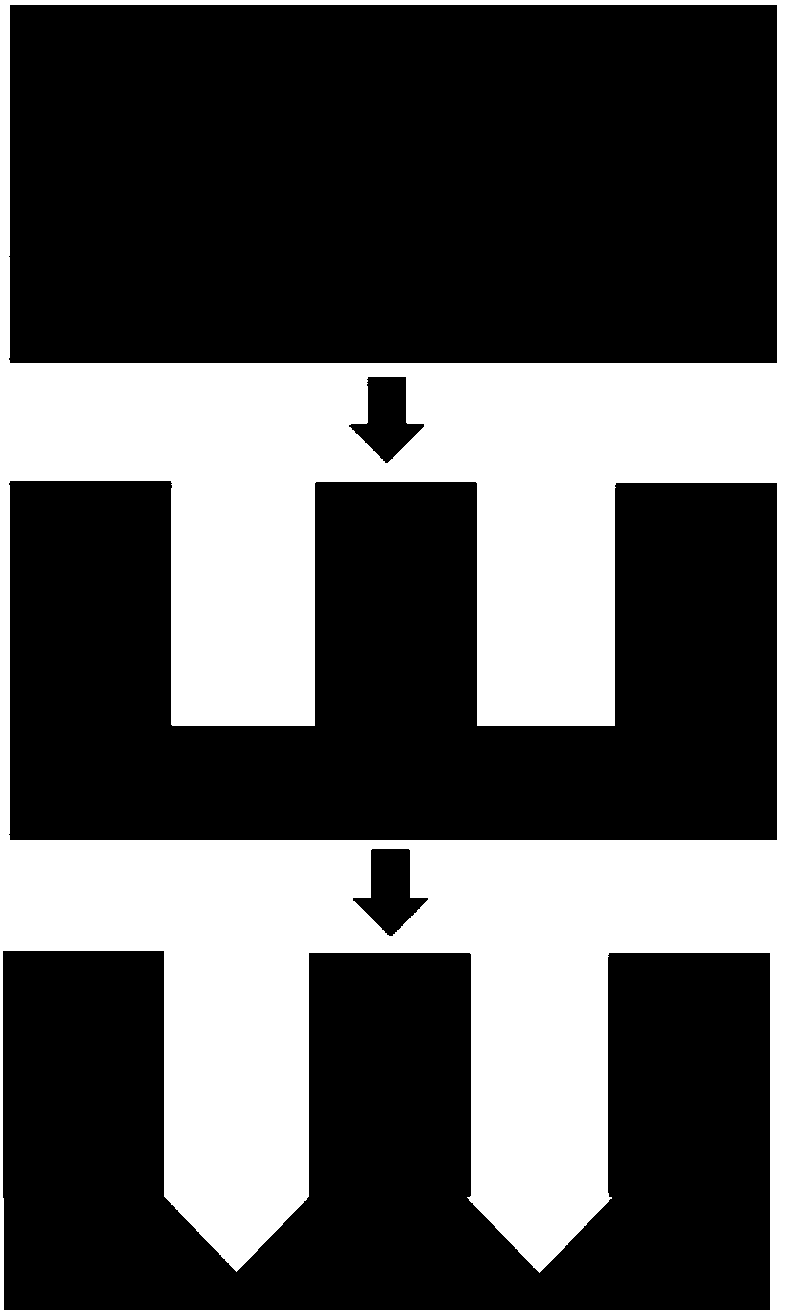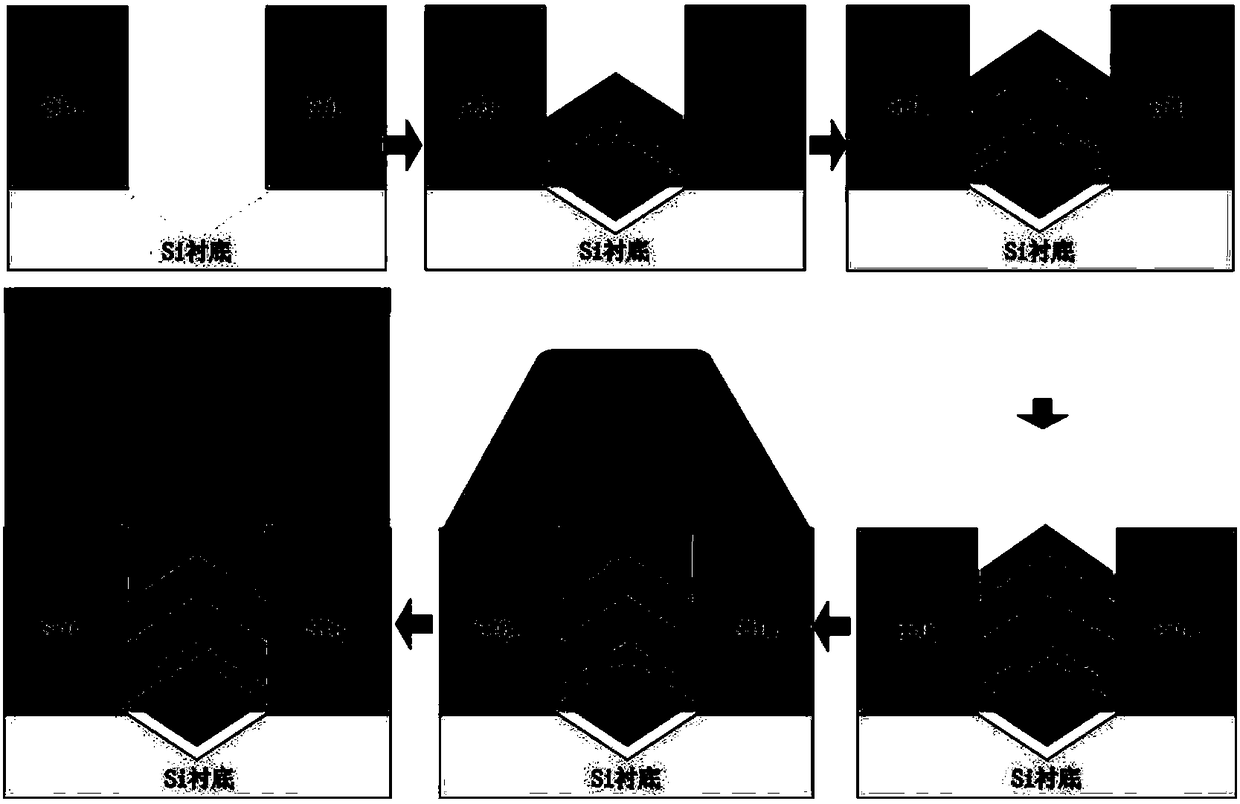Preparation method of epitaxial material of silicon-based nanometer laser array with electrically-injected long wavelength
A nano-laser, epitaxial material technology, applied in metal material coating process, active area structure, gaseous chemical plating and other directions, can solve problems affecting the crystal quality of epitaxial layer, limit device performance and stability, etc. Mass mass production, the effect of reducing dislocation density
- Summary
- Abstract
- Description
- Claims
- Application Information
AI Technical Summary
Problems solved by technology
Method used
Image
Examples
Embodiment Construction
[0043] The specific implementation manners of the present invention will be further described in detail below in conjunction with the accompanying drawings and embodiments. The following examples are used to illustrate the present invention, but are not intended to limit the scope of the present invention.
[0044] This embodiment provides a silicon-based nanolaser array epitaxy method for electrical injection with a long wavelength (1.3 μm to 1.6 μm), including:
[0045] S1. Fabricate a nanometer-sized graphic mask on a single crystal silicon substrate by plasma-enhanced chemical vapor deposition PECVD method, dry etching technology and wet etching technology;
[0046] S2. Based on the metal organic compound chemical vapor deposition MOCVD method, sequentially fabricate an InP low-temperature nucleation layer, an n-InP high-temperature buffer layer, a dislocation barrier layer, an n-type confinement layer, a lower waveguide layer, and a quantum well layer on the pattern mask....
PUM
 Login to View More
Login to View More Abstract
Description
Claims
Application Information
 Login to View More
Login to View More - R&D Engineer
- R&D Manager
- IP Professional
- Industry Leading Data Capabilities
- Powerful AI technology
- Patent DNA Extraction
Browse by: Latest US Patents, China's latest patents, Technical Efficacy Thesaurus, Application Domain, Technology Topic, Popular Technical Reports.
© 2024 PatSnap. All rights reserved.Legal|Privacy policy|Modern Slavery Act Transparency Statement|Sitemap|About US| Contact US: help@patsnap.com










